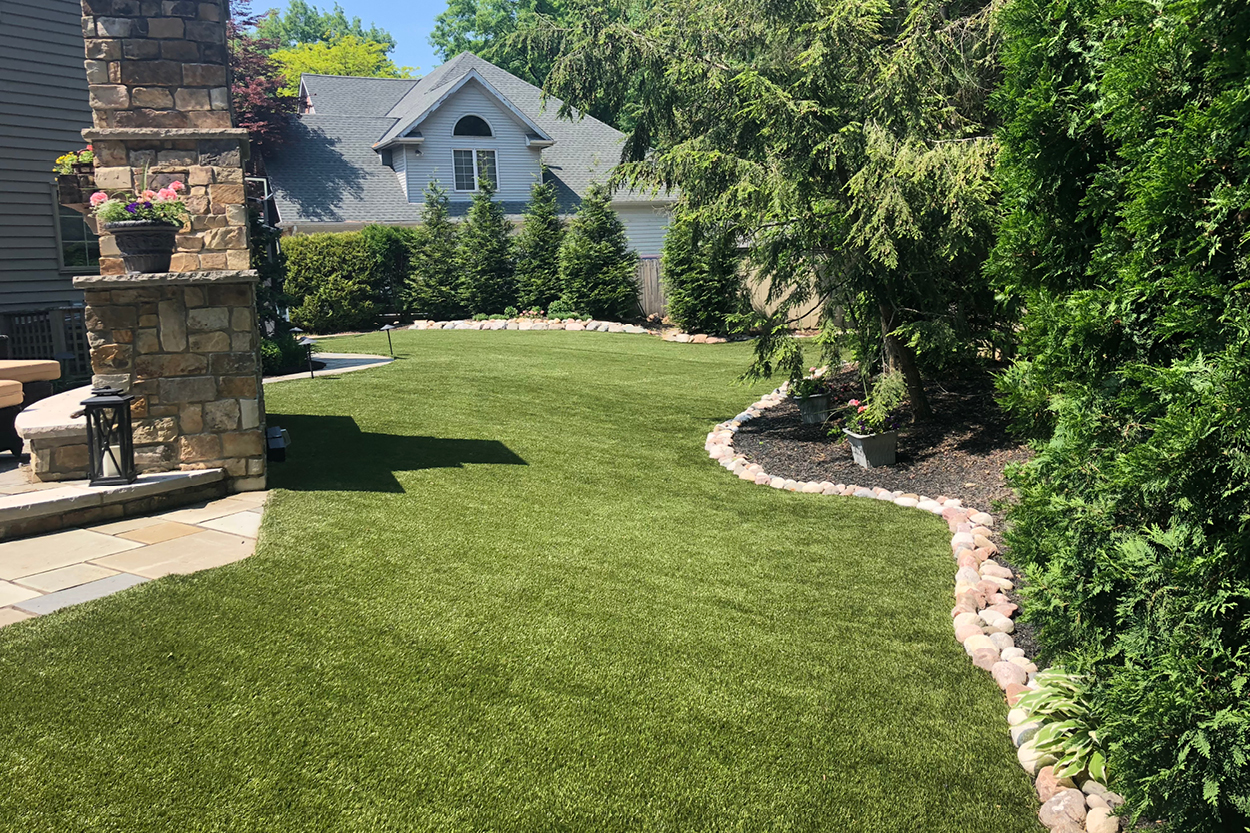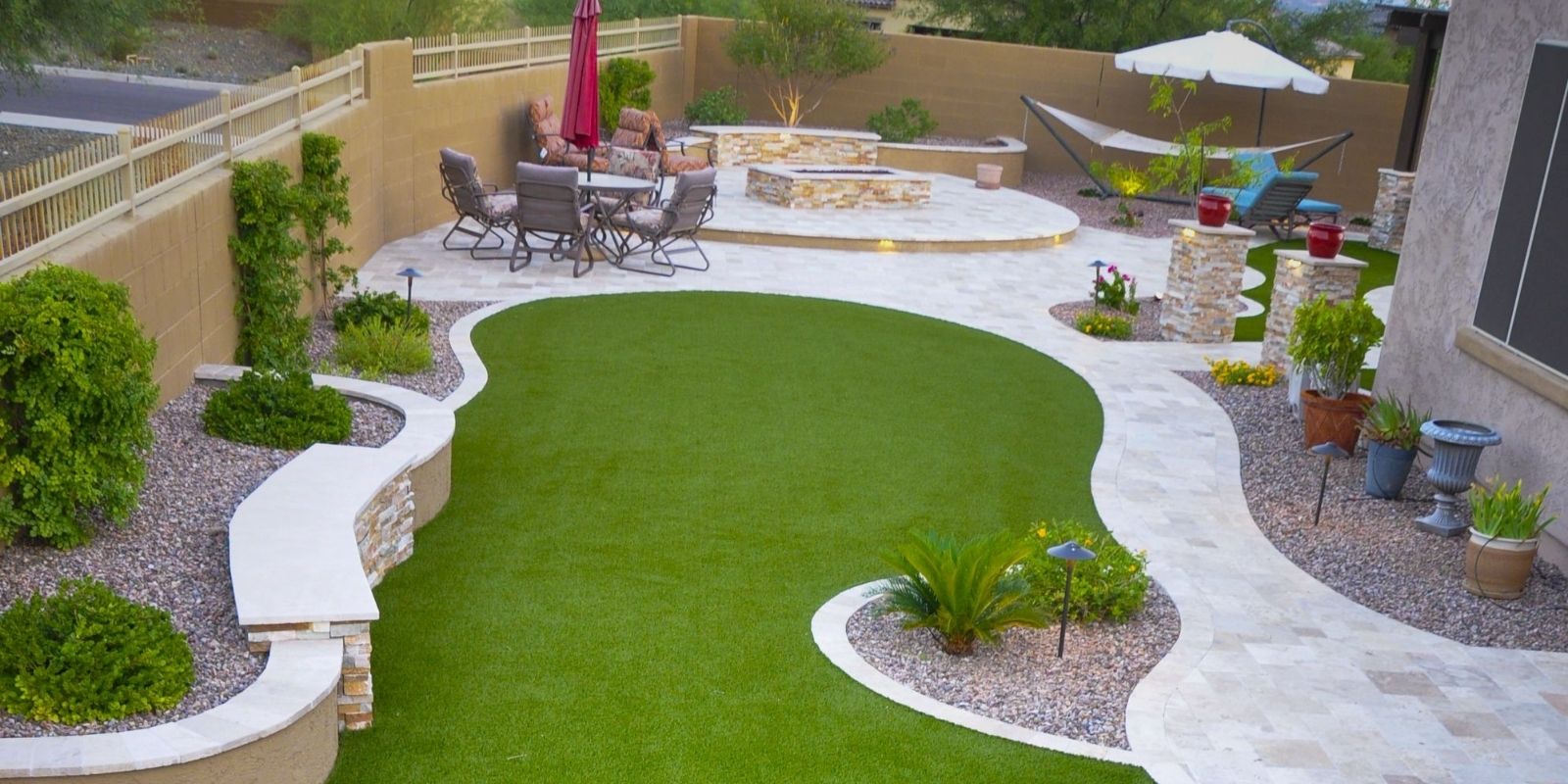Look Into the Environmental Conveniences of Opting for Artificial Lawn Solutions
The adoption of man-made turf remedies presents an engaging opportunity to address pushing environmental difficulties. By dramatically minimizing water usage and reducing the application of harmful chemicals, these alternatives not only advertise lasting landscaping yet also safeguard regional communities.
Water Preservation Benefits
One of the most substantial benefits of fabricated turf is its ability to save water. In comparison, synthetic turf does not need watering, dramatically lowering the total demand for water sources.
By getting rid of the demand for routine watering, synthetic grass adds to lasting landscape methods and helps reduce the ecological influence of excessive water usage. The conservation of water expands to the reduction of overflow, which can lead to dirt disintegration and river air pollution.
In addition, the installment of synthetic grass allows home owners and municipalities to assign water resources more successfully, concentrating on essential uses such as alcohol consumption water and agriculture. The shift towards man-made turf not only advertises liable water usage yet additionally straightens with more comprehensive ecological objectives aimed at preserving all-natural resources.
As neighborhoods progressively prioritize sustainability, the water conservation advantages of synthetic grass offer an engaging case for its adoption in industrial and residential landscaping jobs.
Lowered Chemical Use
The transition to synthetic grass considerably reduces the reliance on chemical therapies typically utilized in natural yard upkeep. Typical turf monitoring commonly includes the application of herbicides, fertilizers, and pesticides to advertise growth and control parasites. These chemicals can present threats to human health and wellness, neighborhood wildlife, and the setting, adding to dirt and water contamination.
In comparison, fabricated turf removes the need for these damaging materials. By lessening the release of artificial substances right into the ecosystem, man-made lawn advertises much healthier soil and water systems.
Additionally, the lack of chemical drainage related to synthetic grass installments aids shield regional waterways from contamination, sustaining marine life and keeping biodiversity. Arizona turf. As communities increasingly focus on lasting techniques, deciding for synthetic grass presents a viable remedy that straightens with ecological preservation objectives. With this change, residential property proprietors can delight in rich green areas without compromising eco-friendly wellness, leading the way for a much more sustainable future
Reduced Carbon Footprint

Moreover, the installation of synthetic grass can lead to substantial water preservation. All-natural yards call for substantial quantities of water for watering, which not only contributes to the carbon impact associated with water extraction and therapy but also pressures neighborhood water resources. In comparison, synthetic grass requires marginal maintenance, needing no watering, thereby dramatically reducing water usage and its connected power costs.
Additionally, the durability of fabricated lawn contributes to its decreased carbon effect. With a life-span of as much as 15 years or even more, the demand for constant substitutes is decreased, causing much less waste and reduced power intake in production and throwing away typical yard choices. In general, synthetic grass provides a sustainable choice for eco mindful landscape design.
Habitat Preservation
Habitat preservation is a vital consideration in the dispute over landscape design options, especially when comparing artificial grass to natural grass. All-natural lawn yards often require comprehensive upkeep, consisting of using herbicides, fertilizers, and chemicals, which can detrimentally impact neighborhood environments. These chemicals can leach right into the dirt and rivers, damaging indigenous flora and animals and interfering with neighborhood environments.
Fabricated turf eliminates the need for hazardous chemicals, thereby protecting neighboring wildlife and keeping the stability of surrounding ecosystems. The installation of synthetic grass can lead to the conversion of former turf areas right into more biodiverse landscapes, such as pollinator yards or native plant areas, which can sustain neighborhood wildlife.
Eventually, the shift to synthetic grass not only conserves water and lowers maintenance initiatives but additionally promotes a more harmonious relationship in between human activities and the all-natural atmosphere, promoting habitat have a peek here preservation at the same time.
Long-Term Sustainability
Long-lasting sustainability is a critical aspect in examining the advantages of artificial turf over standard turf yards. One of the most significant advantages of fabricated lawn is its sturdiness; it can last as much as 15-20 years with very little upkeep, whereas natural turf requires frequent reseeding and substitute. This durability reduces the requirement for continuous sources, such as water, plant foods, and chemicals, which are necessary for keeping a healthy turf lawn.
In addition, fabricated grass contributes to a decrease in carbon emissions connected with yard treatment equipment. Standard grass usually require gas-powered mowers, leaners, and blowers, every one of which add to air contamination. Artificial turf companies phoenix. In contrast, synthetic grass removes the requirement for such devices, promoting a cleaner setting
In addition, the manufacturing of man-made lawn significantly makes use of recycled products, improving its sustainability account. As manufacturers adopt green practices, the ecological impact of synthetic turf remains to lessen.

Verdict
The fostering of synthetic grass solutions offers considerable ecological benefits, including substantial water conservation, decreased dependence on damaging chemicals, and a lower carbon footprint. Moreover, synthetic grass aids in protecting natural habitats by reducing land disruption and promoting long-term sustainability via making use of durable materials. Jointly, these variables emphasize the capacity of synthetic grass to contribute positively to environmental health and use a feasible alternative to standard landscaping practices in a significantly resource-conscious world.
In comparison, fabricated turf does not require watering, considerably minimizing the overall need for water sources. By decreasing the launch of synthetic compounds into the community, man-made lawn advertises healthier dirt and water systems.
Additionally, the installment of man-made lawn can result in significant water conservation. In contrast, fabricated lawn needs marginal maintenance, calling for no watering, thus dramatically minimizing water use and investigate this site its linked power expenses.

Comments on “Skilled Arizona Turf Installation Services for Home and Commercial Use”